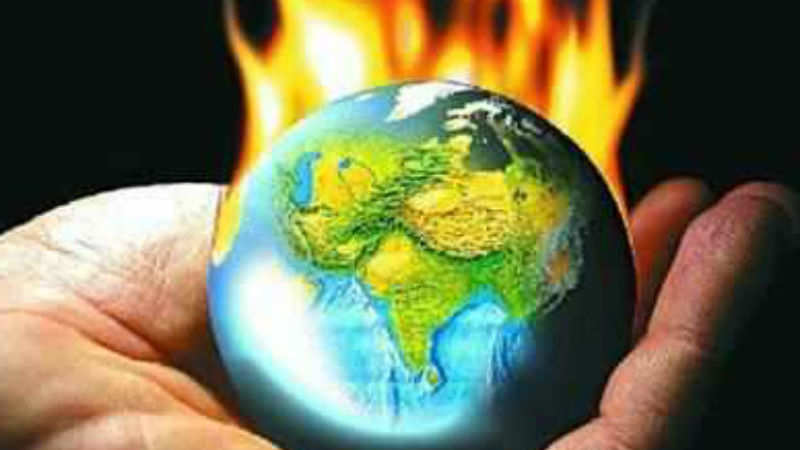Bhubaneswar: Odisha is set to witness a 30 times increase in extremely hot days by the end of this century, thanks to heavy greenhouse gas emissions, a study report revealed here Monday said. A projected 42,334 excess climate-related deaths will also be witnessed by 2100.
The study conducted by the Climate Impact Lab in collaboration with the Tata Centre for Development at UChicago said Odisha is projected to see 42,334 excess climate-related deaths due to increase in temperature.
It is almost five times more than the total deaths the state records due to cardiac arrest every year.
“Odisha has a history of experiencing extreme heat-related fatalities. In 1998, the state faced an unprecedented heatwave situation, resulting in 2042 deaths, the report said. India, as a whole, the study report released here Monday said will see the number of extremely hot days per year increased by more than eight times from 5.1 (in 2010) to 42.8 (by 2100).
The study is the first in a series of findings estimating the human and economic costs of climate change and weather shocks in India, conducted by the Climate Impact Lab in collaboration with the Tata Centre for Development at Chicago.
Under a high-emission scenario, the state is projected to see a 3.32 degrees Celsius rise in average summer temperature from 28.87 degrees C in 2010 to 32.19 degrees C by 2100.
It is far higher than the national average increase from about 24 degrees C to about 28 degrees C by the end of the century.
Neighbouring Andhra Pradesh is close behind, which is likely to see a temperature rise of 3.07 C.
By analysing highly spatially detailed climate data from 33 global climate models, the study reveals some alarming results that emphasise why urgent climate action is required to limit global temperature rise.
Though extensive awareness campaigns have largely reduced the number of casualties during the post-1998 period, still several casualties are being reported each year.
“With climate change projections signalling a 30 times rise in extremely hot days, it calls for amplified efforts to be put in place to build resilience, particularly for the vulnerable communities,” says Pradeep Kumar Nayak, Chief General Manager, Odisha State Disaster Management Authority.
According to the study, under a high-emission scenario, 16 out of the 36 states and union territories are estimated to become hotter than Punjab, which is currently the hottest state in India with an average annual temperature just below 32 degrees C (as of 2010). Punjab is likely to continue to be India’s hottest state in 2100 with an average annual temperature around 36 degrees C.
Six states, Uttar Pradesh (4,02,280), Bihar (1,36,372), Rajasthan (1,21,809), Andhra Pradesh (1,16,920), Madhya Pradesh (1,08,370), and Maharashtra (1,06,749) will contribute 64 per cent of the total excess deaths due to temperature rise.
Between 2010 and 2018, over 6,100 people have died in India due to heatwave, with Odisha, Andhra Pradesh, Telangana and West Bengal together reporting more than 90 per cent of total deaths.
Michael Greenstone, faculty director at the Tata Centre for Development at UChicago and a co-founder of the Climate Impact Lab, said, “This finding makes clear that the continued reliance on fossil fuels globally will greatly harm the well-being of Indians in the coming years and decades. The impact of carbon emissions is going to be more pronounced on societies across the globe, including India, which has already seen 2,500 deaths due to a heatwave in 2015.”
The future is going to be even more worrying if a course correction is not embarked upon at the earliest and investments are not made towards mitigating the harmful effects of climate change, said Amir Jina, Assistant professor at the Harris Public Policy and researcher at the Climate Impact Lab.
The presentation of the report was followed by a panel discussion on the impact of climate change and extreme weather events in Odisha.
